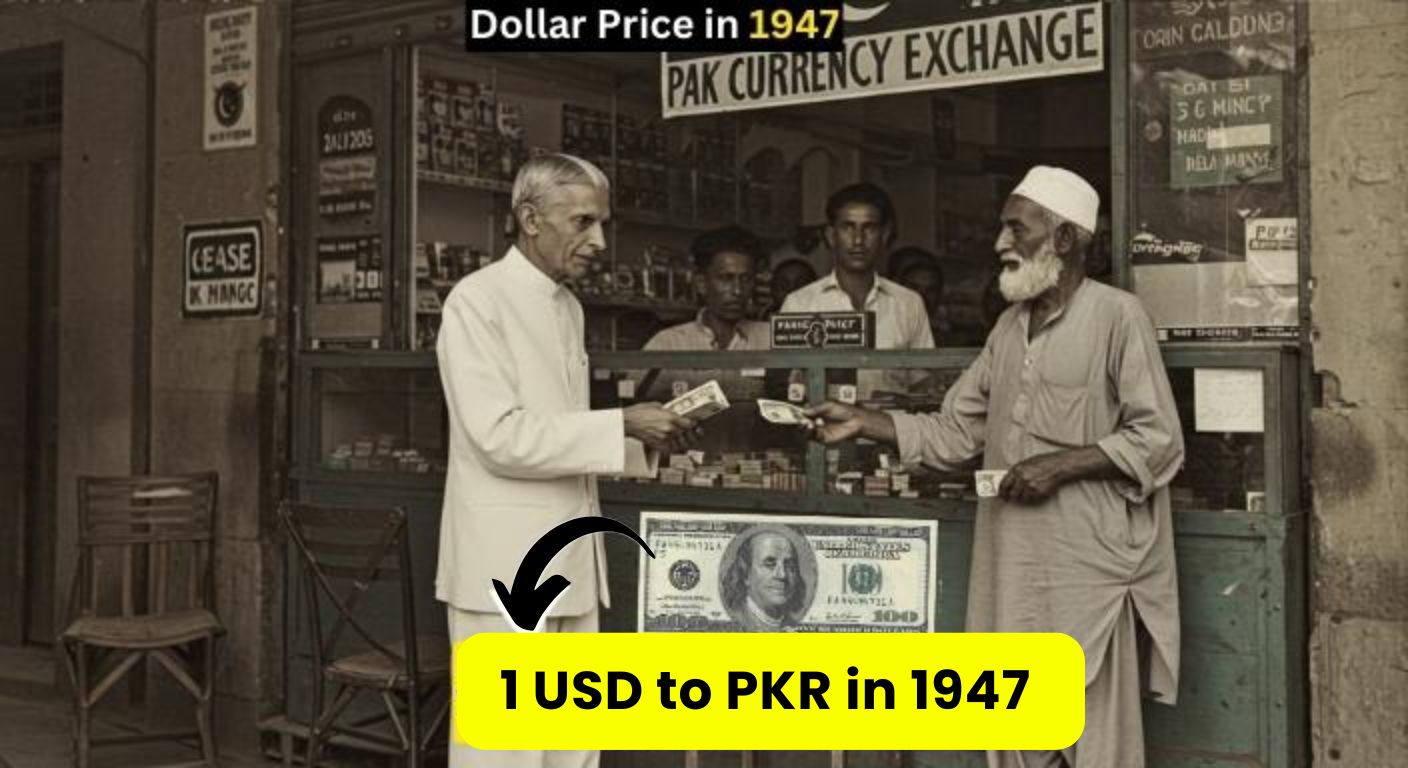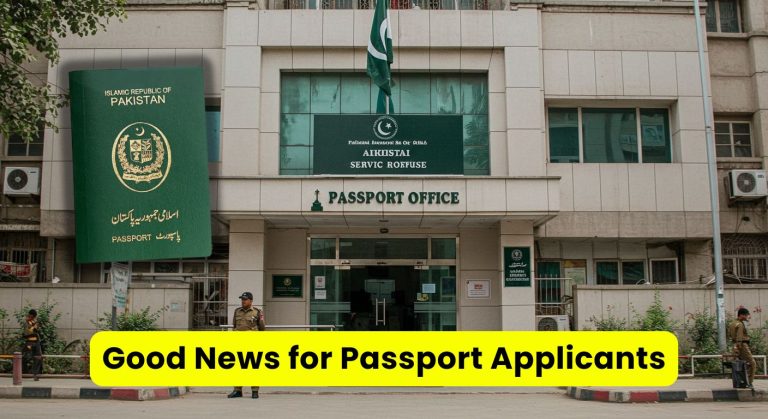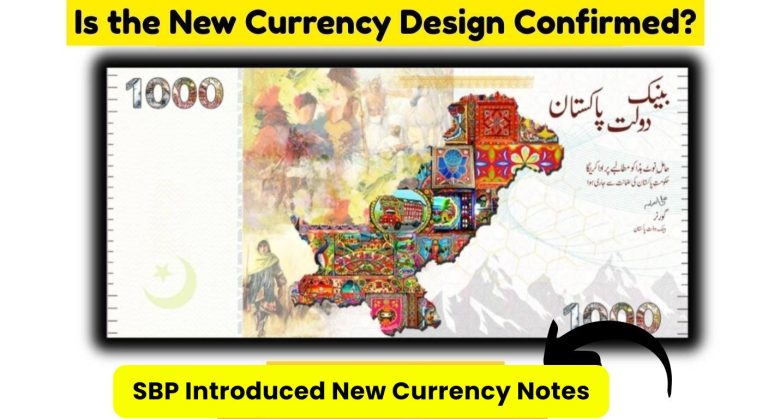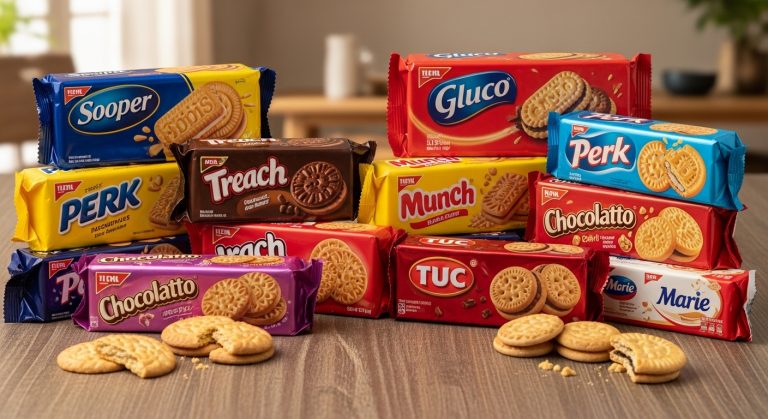1 USD to PKR in 1947 – Pakistan Dollar Rate History

The exchange rate between the Pakistani Rupee (PKR) and the US Dollar (USD) tells a powerful story of Pakistan’s economic journey since independence. Today, in 2025, one US dollar is equal to around PKR 283.35. But back in 1947, just after independence, one dollar was worth only PKR 3.31. This huge difference reflects the many ups and downs in Pakistan’s economy over almost eight decades.
The dollar has always been important for Pakistan because it is the most widely used currency in international trade, foreign loans, and savings. By looking at the changes in the USD to PKR rate, we can understand how Pakistan’s financial policies, global events, and local challenges shaped the country’s economy.
Dollar to PKR Exchange Rates (1947 – 2025)
Here is a timeline of the major milestones in the USD to PKR exchange rate:
| Year | Rate (1 USD = PKR) | Key Point |
|---|---|---|
| 1947 | 3.31 | Independence; the rupee is linked to the British pound |
| 1955 | 4.76 | First devaluation to support exports |
| 1966 | 4.76 | After Bangladesh’s separation, the rupee floated |
| 1972 | 9.90 | Independence; the rupee is linked to the British pound |
| 1982 | 12.85 | Shift to a managed float system |
| 1990 | 21.71 | Economic reforms and market liberalization |
| 2000 | 51.90 | Political issues and global sanctions |
| 2008 | 70.65 | Impact of the global financial crisis |
| 2009 | 83.50 | Sharp devaluation due to economic strain |
| 2018 | 138.00 | IMF bailout and currency depreciation |
| 2020 | 160.10 | COVID-19 pandemic hits the economy |
| 2023 | 286.58 | Record high during political & economic crisis |
| 2025 | 283.35 | Current rate, slightly down from last week |
Why the Dollar Rate Was Important in 1947
When Pakistan was born in 1947, its economy was debt-free and small compared to today. The rupee was linked to the British pound, which itself was tied to the US dollar under the Bretton Woods system. At that time:
- Stable Currency: The official rate was 1 USD = PKR 3.31, and it remained steady.
- Limited Dollar Use: Most trade was done in British pounds or local currency. The US dollar was mainly used for imports of machinery, foreign aid, and official trade.
- Strong Gold Link: The US dollar was tied to gold globally, which made the exchange rate predictable and stable.
This early stability helped Pakistan establish its first trade relations and manage its finances without major currency crises.
First Devaluation in the 1950s
The first major shift came in 1955 when Pakistan devalued the rupee, moving the exchange rate from 3.31 to 4.76 PKR per USD. This step was taken to support exports and attract foreign aid, as Pakistan was beginning to rely more on loans and assistance.
Although this devaluation helped exporters, it also marked the beginning of Pakistan’s long journey of currency adjustments in response to economic pressures.
The 1970s – Political Change and Floating Rupee
The 1970s were a turning point. After the separation of East Pakistan in 1971 and the birth of Bangladesh, Pakistan faced economic difficulties. In 1972, the government decided to float the rupee. As a result, the dollar rate jumped from 4.76 PKR to 9.90 PKR.
This was more than just a number. It showed how political instability and global pressures could affect Pakistan’s financial strength. Imports became more expensive, and inflation rose.
The 1980s – Managed Float System
In 1982, Pakistan introduced a managed float system for its currency. The exchange rate was adjusted gradually instead of being fixed. By that time, the dollar had reached PKR 12.85.
During the 1980s, Pakistan received foreign aid due to the Afghan war, which helped the economy temporarily. However, long-term dependence on aid and loans created more challenges for the rupee.
The 1990s – Liberalization and Rising Dollar
By 1990, the dollar rate had climbed to PKR 21.71. This period saw economic reforms and market liberalization. While these reforms opened new opportunities, they also exposed Pakistan’s currency to market pressures.
The rupee continued to lose value as imports increased, inflation rose, and political instability continued. By the end of the 1990s, the dollar had crossed PKR 50.
The 2000s – Sanctions and Global Financial Crisis
In 2000, the dollar rate was PKR 51.90. Political tensions and global sanctions affected the economy. By 2008, during the global financial crisis, the rate jumped to PKR 70.65.
In 2009, the rupee weakened further to PKR 83.50, showing how global issues could shake Pakistan’s economy.
The 2010s – IMF Bailouts and Currency Depreciation
During the 2010s, Pakistan faced repeated economic problems, leading to multiple IMF programs. By 2018, the dollar had reached PKR 138.00 due to an IMF bailout and currency depreciation.
For ordinary Pakistanis, this meant rising prices of essential goods, fuel, and imported products.
The 2020s – Pandemic and Crisis
The COVID-19 pandemic in 2020 pushed the exchange rate to PKR 160.10. Trade slowed, remittances were uncertain, and inflation increased.
By 2023, political and economic crises pushed the dollar to a record high of PKR 286.58. This was the weakest point for the rupee in history. In 2025, the rate is slightly better at PKR 283.35, but still extremely high compared to the early years.
What the Dollar Rate Means for Pakistan Today
The journey from PKR 3.31 in 1947 to PKR 283.35 in 2025 tells us how Pakistan’s economy has changed. Today:
- Imports are Expensive: Fuel, machinery, and technology cost more when the rupee is weak.
- Inflation is High: The weaker rupee makes everyday goods more expensive.
- Remittances Help: Overseas Pakistanis send more than $30 billion annually, which supports the economy.
- Investment Challenges: Currency instability makes investors cautious.
The exchange rate directly affects travel, education, savings, and business decisions for millions of Pakistanis.
Conclusion
The history of the dollar to PKR exchange rate is the history of Pakistan’s economy itself. From the stable PKR 3.31 per USD in 1947 to the current PKR 283.35 per USD in 2025, the rupee’s journey reflects inflation, political instability, global crises, and economic reforms.






